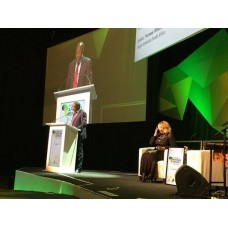R220bn SA investment include PGMs
Indaba scheduled 5th and 8th February
South Africa has more than R220 billion worth of investments in the project pipeline for the mining industry which include the platinum group metals (PGMs) & more minerals& metals as well as, energy. Addressing the 2018 Annual Investing in Africa Mining Indaba in Cape Town, Mineral Resources Minister Mosebenzi Zwane said the investment demonstrates that the country remains a critical investment destination.
“As host of over 80% of global reserves, South Africa has taken the lead in research and development for downstream beneficiation of PGMs principally through the Hydrogen South Africa (HySA) flagship project which is focused on developing downstream beneficiation of platinum through its use in hydrogen powered fuel cells,” Minister Zwane said.
He said the country is ready to partner with investors in this area and other priority value chains including other metals and jewellery. “We have established special economic zones with the relevant infrastructure, where investors will benefit from special incentives, infrastructure and proximity to raw materials,” Minister Zwane said.
This is a pivotal event that has been shaping the future of Africa’s mining over the past 24 years and connecting 28+ African and International mining ministers, 221+ junior and major mining companies, 350+ investors and 80+ NGOs and community representatives.
Based on the report on a recent study by Deloitte on Mining in Africa, there is approximately thirty mining projects to be developed on the African continent by the end of 2018, totaling an estimated minimum of 18 billion US dollars.
Most of these are expected to reach full production by 2018 across different commodities, including Nine copper mines, Four gold mines, Four diamond mines, Three coal mines, Three platinum mines, Two uranium mines, One iron ore mine, One nickel mine, One zinc mine and One potash mine.
Approximately 10.5 billion US dollars has already been spent on these projects, with about 29% invested in South Africa, 23% in the Democratic Republic of Congo (DRC), 8% in Mauritania, 8% in Namibia, 8% in Zimbabwe and 7% in Zambia.




